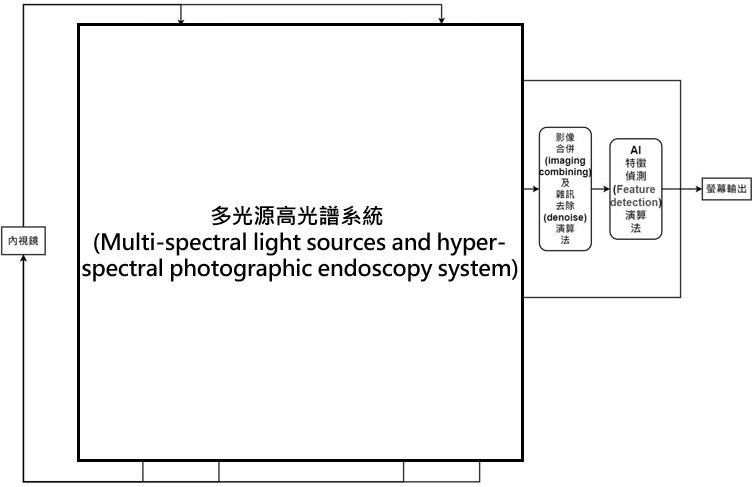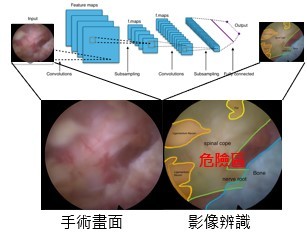Development of Smart Spine Endoscope
 |
 |
|
Cheng-Chun Chang, Associate Professor National Taipei University of Technology Expertise: Signal Processing (Spectrum sensor signal processing, Communication signal processing, Biomedical signal processing, Sound signal processing), Mobile/Embedded Systems, Ai/Machine Learning |
Meng-Huang Wu, Assistant professor Medical department, Taipei Medical University Expertise: Orthopedic, Spinal medicine, Biodesign, Tissues engineering |
Contents
Spinal endoscopic surgery requires a high-quality imaging requirement and usually faces blood visual barriers or vision turbidity. Surgeons must find bleeding points under blood bleeding and vision turbidity case, and use electric burning surgical instruments to stop bleeding, often spend a lot of time, extend surgery, affect medical quality, and side effect.
Expected result
The technology uses multi-spectral light sources to reduce the interaction of light and hemoglobin, and the hyper-spectral photographic system receives optical signals to solve the problem of blood barriers and vision turbidity. In addition, using artificial intelligence computer vision to labeling blood points and tissues.
Benefits to industry
On the clinical side, improve blood barriers, vision turbidity, reduce the time of the radiation imaging, improve medical quality. On the engineering side, discover more medical applications for artificial intelligence.

This is the multi-spectral light sources and hyper-spectral photographic endoscopy system workflow

In this project, we would combine with artificial intelligence computer vision for labeling bleeding points and tissue.